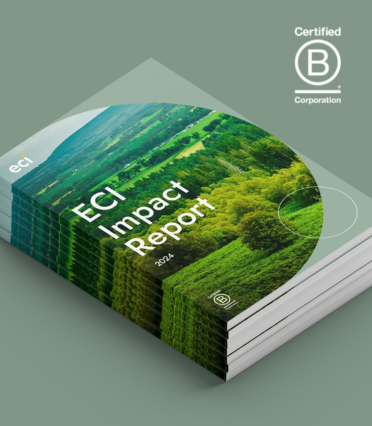It’s been a decade since ECI first invested in an IoT business, Wireless Logic, which was also one of the first IoT transactions in the UK Mid-Market. Since then, ECI has invested further into IoT with CSL, Peoplesafe and Arkessa. We chat to Paul McCreadie and Isa Maidan about how the sector and investor interest has evolved over the last decade, and their predictions for what the next decade holds:
1. What was the private equity perspective of the IoT market a decade ago?
Paul: When we met Wireless Logic, we were attracted by its growth, its resilience and its fantastic management team but in terms of perspective of the IoT market, in 2011 it didn’t really exist, or it certainly wasn’t a term that was used. People talked about the machine to machine or M2M market as part of the telecoms ecosystem, but it wasn’t a large and mature enough market to be an area of focus. So, we knew we liked the business and we got to know the market more to understand that it had fantastic growth prospects and was different to the other subsectors of the telco market at the time. That meant we were able to build conviction in Wireless’ growth potential, and that made it very exciting.
2. How has that perspective changed over the last decade?
Isa: As Paul mentioned, many investors saw M2M in the same way as the telecoms ecosystem. As businesses like Wireless Logic, Arkessa, Peoplesafe and CSL have delivered such strong performance, investors have recognised that the dynamics in IoT are very different. Connections are stickier and volumes are growing extremely quickly. That is very different to the fundamentals in traditional telecoms and that’s what makes these businesses so valuable.
Paul: The growth and maturity of this market has changed investors’ perspectives. Wireless Logic and CSL were two of the few early examples of businesses that really led the way in proving how to scale an M2M, or IoT, business model. The first use case that really gained any scale in this sector was to do with vehicle tracking, and vehicle telematics is still the biggest use-case, scale wise. At first that may have been seeing where a vehicle was periodically, then you could see it continuously, then you could see what temperature the cab was, then whether the vehicle needed a service, whether the driver needed a break etc. Vehicle telematics is now a huge and more mature market and many others are growing behind it, be that security, asset monitoring, Smart Cities, telehealth or many more where the number of connections will be enormous. It’s this significant increase in size of the market and its continued growth that has meant that the IoT market has become very attractive to investors.
3. What market dynamics have supported growth in IoT?
Paul: There is a general need for businesses to become more productive and more efficient to continue to grow and IoT can play an important role there. For example, monitoring assets remotely rather than having to send engineers out on costly periodic site visits, even diagnosing them remotely so the engineer turns up with the right tools! Management teams want more useful data to run their businesses efficiently and IoT enables that.
Isa: Data capability and cost factors have been important. We’ve seen a consistent reduction in the cost of data which opens up use cases that wouldn’t have been economically viable 10 or even 3 years ago. The take up of a GPS chip in your dog’s collar may be limited if it cost £100 per month, but at £2 a month the business case changes! Also, with 4G and now 5G you have much lower latency connections which again opens up use cases which weren’t possible a few years ago, autonomous vehicles being a good example of this.
4. How do you assess who the winners are in IoT?
Paul: As with many markets, the winners are often those that have specialisms (such as CSL’s critical connectivity or Peoplesafe’s personal safety solutions) or those that have scale (such as Wireless Logic). They have each achieved this in different ways but with strong market tailwinds and great execution of a vision whilst providing a solution that the market needs.
However, the half-life of business models is shortening, especially in fast growth technology, so great management teams have to continue to evolve their models to ensure they remain winners in their market!
Isa: That evolution may mean adding new services, more security, or providing an improved service wrapper for the customer. Another key differentiator might be the route to market. For example, when we invested in Arkessa, they understood there was a significant opportunity in putting in IoT connectivity at the point of manufacture rather than in the aftermarket.
5. Do you expect you’ll see consolidation in the market or mobile network operators (MNOs) taking market share?
Paul: There has already been some consolidation of the market as companies aim to dominate certain vertical IoT markets or gain scale. However, you tend to see consolidation when there is low growth, and at the moment there is so much growth opportunity in many verticals in IoT that there’s enough to go for organically.
Isa: The MNOs have historically struggled to service smaller customers which Wireless Logic and Arkessa have capitalised on. Likewise, they haven’t been able to offer the service or tech wraparound required to deliver in certain end markets which is where CSL and Peoplesafe have excelled. Where you are more likely to see MNOs is in very large, high volume segments and where they can tag on other products. Vehicles is an obvious example where there are lots of very large players, multiple sensors per car and opportunities for cross sell.
6. Is internationalisation front of mind for IoT CEOs and investors?
Paul: Use cases can be domestic or international, for example you might be serving smart motorways or shipping container tracking. Whatever the use case, they don’t necessarily require an international presence, given international mobile roaming agreements, but having that local presence can be part of the service wrapper to help build the customer base. It’s why international M&A is often part of the longer-term roadmap for IoT businesses.
7. Is AI becoming more important as a service-add on?
Isa: Not necessarily as an add-on, but what you’re seeing is effectively a ‘megatrends crossover’. With IoT devices we are seeing the collection of a huge amount of data and AI is the tool through which we can analyse that data. We mostly see separate businesses performing these two functions, as the competencies required for IoT are typically quite different to those required in AI, however, there’s no reason one business can’t provide both.
8. Do you think IoT will support a greener future?
Paul: I think IoT will actually be fundamental to a greener future – for example by 2035 all new cars will be electric, and to facilitate that you need a smart grid that can cope with every car being plugged in all day, and IoT will need to solve that problem.
9. What do you think we’ll be saying about in IoT in 2031?
Paul: More and more devices will be connected but I suspect we will not really be talking about it as it will become so ubiquitous – for example think about your Fitbit or your Kindle, you don’t think about it as IoT, you just expect that your devices will be connected.
Isa: I agree, I think people’s expectations of what is connected will continue to grow. Ten years ago, if someone told you your fridge would tell you when your eggs are off you would think they were mad and yet here we are. I don’t know what other “stuff” will be connected in ten years but the demand for connectivity and data driven decision making isn’t going away any time soon.
Paul: I think one other prediction would be that there will be global standards around IoT. As more of our devices are connected and we’re giving more and more of our data over, the importance of security, for example, will only increase. The IoT market will need to mature around accreditation and regulation.
10. And lastly, what is the most pointless IoT device you’ve seen yet?
Paul: Nespresso’s Prodigo tells you when your pods are out and you can start making coffee from your phone. It does make me wonder, is it an efficiency trend or a laziness trend…
Isa: I read about a kickstarter for a connected toaster. It allowed you to print an image or message from your smartphone onto a slice of toast or even worse, you could send messages to your mates via their slice of toast. The mind boggles.



